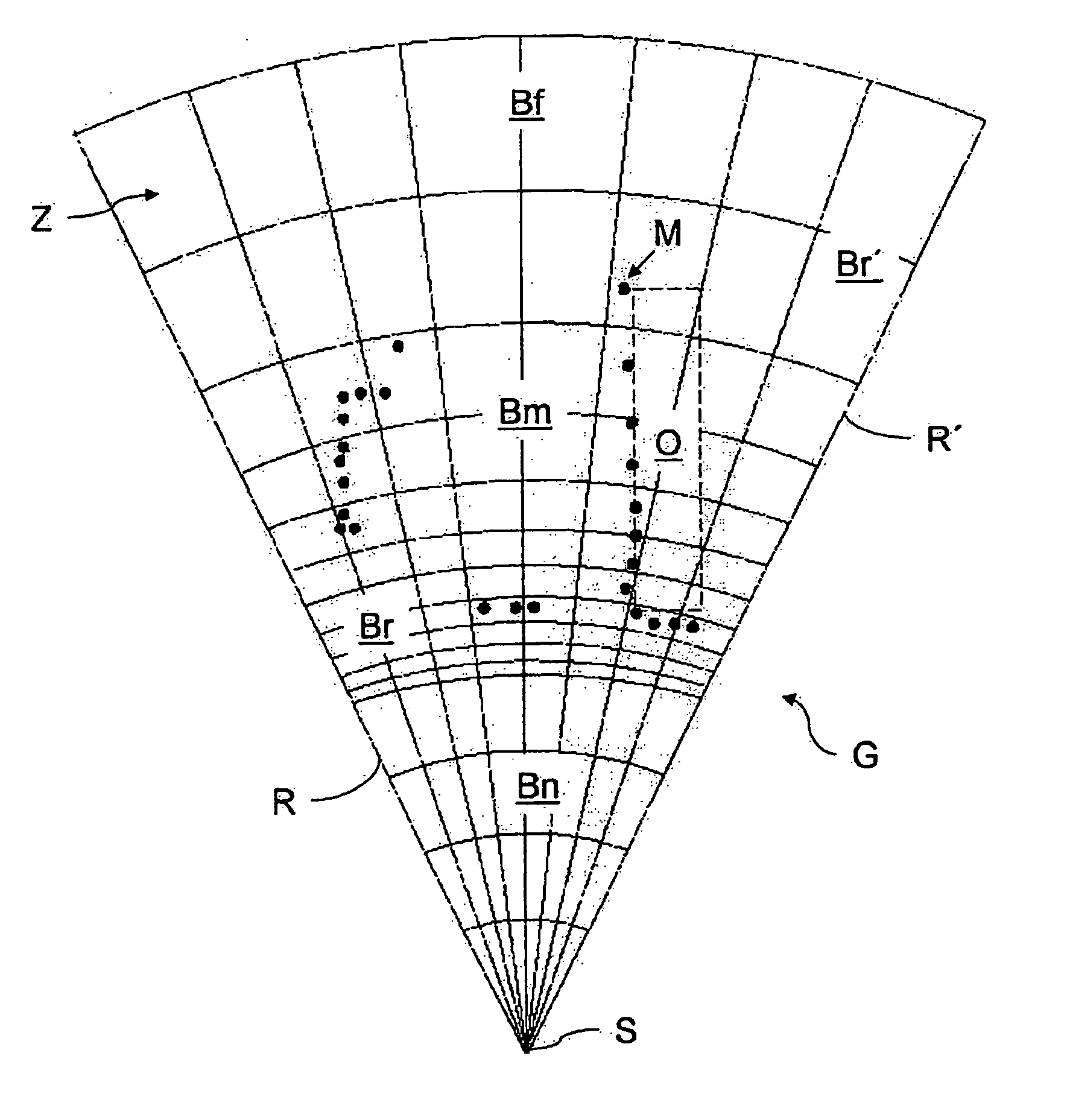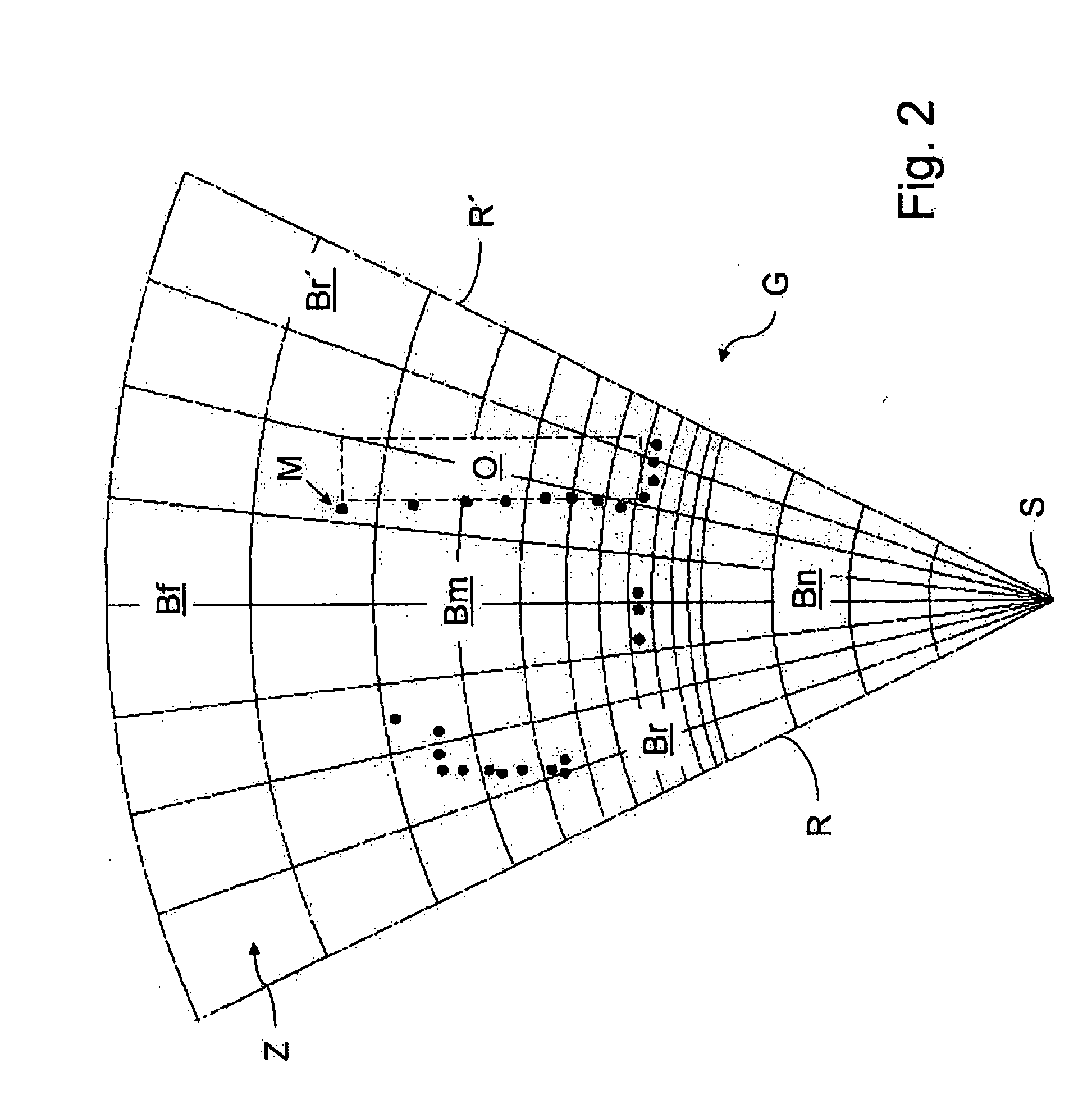Object detection method for vehicles
a technology for objects and vehicles, applied in the field of objects detection methods for vehicles, can solve the problems of grids of this kind that cannot be flexibly adapted to the particular function or to the specific application, and the search area size is too large, so as to achieve simple and cost-effective detection performan
- Summary
- Abstract
- Description
- Claims
- Application Information
AI Technical Summary
Benefits of technology
Problems solved by technology
Method used
Image
Examples
Embodiment Construction
[0055]FIG. 2 shows exemplarily a grid G, whose near region Bn relative to a sensor S has an equidistant incremental dimension of cells Z. The incremental dimension of cells Z increases geometrically from a middle region Bm and into a far region Bf. Measured values of potential collision objects O (one of which is plotted exemplarily in grid G), recorded by sensor S, of all detection planes are projected into grid G, and, based on the number of measuring points per cell, it is ascertained which of cells Z is occupied. Cells that belong together are grouped by an appropriate cluster algorithm, and this result is projected onto the raw data in order to segment the same. Groups of raw data are formed which are assigned to an object and are used for determining tracks of the objects. In this context, each track represents a potential collision object, each actual destination being represented by at least one track. The tracks may be used, for example, for controlling safety systems, such...
PUM
 Login to View More
Login to View More Abstract
Description
Claims
Application Information
 Login to View More
Login to View More - R&D
- Intellectual Property
- Life Sciences
- Materials
- Tech Scout
- Unparalleled Data Quality
- Higher Quality Content
- 60% Fewer Hallucinations
Browse by: Latest US Patents, China's latest patents, Technical Efficacy Thesaurus, Application Domain, Technology Topic, Popular Technical Reports.
© 2025 PatSnap. All rights reserved.Legal|Privacy policy|Modern Slavery Act Transparency Statement|Sitemap|About US| Contact US: help@patsnap.com



